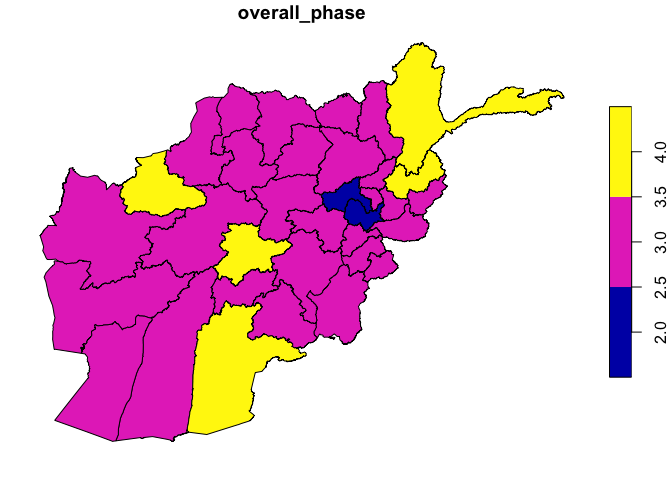
The hardware and bandwidth for this mirror is donated by dogado GmbH, the Webhosting and Full Service-Cloud Provider. Check out our Wordpress Tutorial.
If you wish to report a bug, or if you are interested in having us mirror your free-software or open-source project, please feel free to contact us at mirror[@]dogado.de.
The goal of ripc is to provide access to Integrated Food Security Phase Classification (IPC) and Cadre Harmonisé (CH) data.
You can install the ripc from CRAN:
install.packages("ripc")The development version can be installed from GitHub:
# install.packages("remotes")
remotes::install_github("OCHA-DAP/ripc")ripc provides functionality to access IPC data stored directly on the
IPC-CH Public API. There are
a wider set of functions detailed further below, but most users will get
the information they need from the ipc_get_population()
function which returns datasets of country-level, group-level, and
area-level analyses in a list.
library(ripc)
df_list <- ipc_get_population()
df_list$country
#> # A tibble: 761 × 29
#> analysis_id title country condition analysis_date view_level ipc_period
#> <dbl> <chr> <chr> <chr> <chr> <chr> <chr>
#> 1 65508276 Acute Food… HT A Mar 2024 area A
#> 2 65115079 Acute Food… PS A Feb 2024 area C
#> 3 65115079 Acute Food… PS A Feb 2024 area C
#> 4 65113995 Acute Food… KE A Feb 2024 area A
#> 5 65113995 Acute Food… KE A Feb 2024 area A
#> 6 65024769 Acute Food… SO A Jan 2024 area A
#> 7 65024769 Acute Food… SO A Jan 2024 area A
#> 8 64948217 Acute Food… MG A Dec 2023 area A
#> 9 64948217 Acute Food… MG A Dec 2023 area A
#> 10 64948217 Acute Food… MG A Dec 2023 area A
#> # ℹ 751 more rows
#> # ℹ 22 more variables: population <dbl>, population_percentage <chr>,
#> # period <chr>, from <chr>, to <chr>, analysis_period_start <date>,
#> # analysis_period_end <date>, p3plus <dbl>, p3plus_percentage <dbl>,
#> # estimated_population <dbl>, phase1_population <dbl>,
#> # phase1_percentage <dbl>, phase2_population <dbl>, phase2_percentage <dbl>,
#> # phase3_population <dbl>, phase3_percentage <dbl>, …While the default is to return data frames to the user, you can directly access GeoJSON files from the IPC API.
df_areas <- ipc_get_areas(id = 12856213, period = "P", return_format = "geojson")
plot(df_areas[,"overall_phase"])
More details on the API are available below.
The ripc functions provide access to API endpoints detailed in the IPC-CH Public API documentation. The documentation should be referred to in order to better understand the API calls themselves (under the simplified and advanced documentation sections), and the returned data. For ease of the user, a table to match up the simplified and advanced API endpoints with ripc functions is below.
In general, the same functions can access both API endpoints, but the simplified endpoints are accessed with optional parameters while the advanced endpoints are accessed when IDs and/or periods are explicitly passed.
| ripc | IPC API |
|---|---|
ipc_get_analyses() |
analyses |
ipc_get_country() |
country |
ipc_get_areas() |
areas |
ipc_get_points() |
points |
ipc_get_icons() |
icons |
| ripc | IPC API |
|---|---|
ipc_get_analyses(id = ###) |
analysis/{id} |
ipc_get_areas(id = ###, period = X) |
areas/{id}/{period} |
ipc_get_population() |
population |
ipc_get_population(id = ###) |
population/{id} |
ipc_get_points(id = ###, period = X) |
points/{id}/{period} |
ipc_get_icons(id = ###, period = X) |
icons/{id}/{period} |
Please refer to the IPC API
documentation to learn how to generate a token for the API you can
use to access the data. This API key should be stored in your
environment as IPC_API_KEY. You can easily add this to your
environment by adding the following line to your .Renviron
file, easily accessed using usethis::edit_r_environ().
IPC_API_KEY="API key here"Make sure that your API key is granted access to the resources you need.
Data coming from the IPC API isn’t immediately joinable, with varying
naming conventions for geographical name/ID columns. Outputs from the
ripc functions are wrangled to ease the joining of datasets together by
standardizing some column names and keeping the data in a tidy format.
You can specify tidy_df = FALSE for any
ipc_get_...() function to return directly what the IPC-CH
Public API returns.
The tidy format means that a specific analysis for a period (current, projection, or second projection) and geography (area/point, group, or country) are stored in a single row, with columns containing the relevant metadata, phase classification, and population figures. Data from mixed levels of geography are not stored in the same dataset.
While full documentation of output data can be derived from the IPC API schema documentation, key changes made to the outputs to create tidy data are documented below.
analysis_id is used across all datasets to identify the
ID for a specific analysis.area_id and area_name is used to identify
area and point IDs across the datasets.group_id and group_name for groups in the
same manner.title refers solely to the title of the analysis.phase#_num and phase#_pct refer to the
number of population and percent of population in each phase,
respectively.analysis_period_start and
analysis_period_end are created to be easy to access and
manipulate date columns (rather than strings) in the dataset,
representing the start of an analysis period (1st day of the first
month) and end of an analysis period (last day of the last month).Each exported function from ripc has a Tidy section describing the wrangling done.
For any help, please file an issue on Github.
These binaries (installable software) and packages are in development.
They may not be fully stable and should be used with caution. We make no claims about them.
Health stats visible at Monitor.